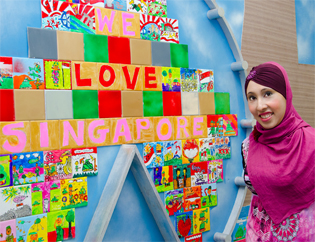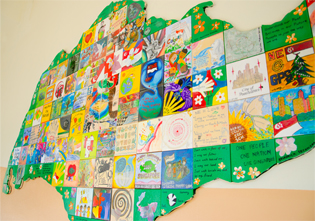Why Singapore’s English Teachers Should Embrace Singlish, Not Fight It
Is it time for Singaporean educators to embrace Singlish as a legitimate learning tool? What the Research […]
Read More
Values should be the top priority in a child’s education. With that goal in mind, Telok Kurau Primary School has put in place a range of initiatives to help shape their pupils into holistic individuals who will contribute to society.
As a teacher, what aspect of a child’s development do you think is the most important? This was the question Mr Wilbur Wong, Principal of Telok Kurau Primary School (TKPS), posed to his teachers during an envisioning exercise in 2006. Their answer: values.
“They put values as top priority. We realize that is really the way to go,” says Mdm Rezina Khan, Head of Department for Character and Citizenship Education (CCE).
Strong values and socio-emotional competencies will help a child succeed in any field, she explains, and that includes academic excellence.

“Character comes first” is one of TKPS’s operating principles. “In TKPS, our CCE is anchored in values. So whatever we do, we emphasize values inculcation,” says Rezina.
Recognizing that values are key to character building, the school decided to focus on six core values: Responsibility, Respect, Resilience, Integrity, Care and Harmony.
They hope to develop every child into a holistic person, “someone who is imbued with values and has a global outlook, yet rooted to Singapore”. This means that every pupil should be able to contribute to the community and to Singapore.
“When we talk about values inculcation, ultimately, they’ll be contributing to society. You want them to be established as individuals who will eventually contribute to the society in the future and also at the present moment.”
Having developed a clear vision of their brand of CCE, the next step was to infuse it into every area of school life, including classroom learning and teaching. “We also realize that there’s an alignment between character and academic excellence.”
In Science, for example, there are many opportunities to talk about values. Teachers make use of relevant topics or “teachable” moments in the classroom to set their pupils thinking about values and choices. They share stories about important scientists and the attributes that led to their success. Topics like DNA in Primary 5 Science lead to discussions about cloning and its ethical implications.
– Mdm Rezina Khan, Telok Kurau Primary School
Learning Journeys provide another avenue for teaching values. This year, the Primary 4 pupils are going to the Science Centre where they will learn about conservation. Along the way, they will also pick up values like being responsible and showing respect.
The teachers have also integrated Science with service learning. This year, the Primary 3 pupils were asked to take care of the gardens in the school, as part of the school’s Values in Action (VIA) programme. They were able to apply their knowledge about life cycles and planting. “The learning becomes very real because they have to see the job through,” says Rezina.
But the learning doesn’t stop there. They want their pupils to think of the long term, to consider the effort and planning needed to maintain their school environment.
“We ask them: What’s next? Now at Primary 3, you take care of it. Who’s going to take care of it when you’re in Primary 4?”
Behind the success of TKPS’s CCE is planning – lots of it – by the teachers. While it is important for school leaders to have a strong vision of what they want to achieve, it is the teachers who develop and carry out the initiatives.
Teachers know their pupils best – their needs and their different abilities. TKPS makes sure that the teachers have time to plan the activities and undergo the required training. This is especially so for new teachers who have to be inducted into the school culture.
Positive feedback from pupils attest to the positive learning outcome. “They enjoy the activities, but I think it shouldn’t stop at just enjoyment. The learning outcomes that we really want to achieve are important,” Rezina stresses.
For example, when pupils said that they didn’t have enough time for reflection after their VIA (which was done after school hours), the school decided to let them do it during lesson time. “There’s no point in rushing through this because it cannot be a touch-and-go process for the learning to be explicit.”
To strengthen the school’s efforts, Rezina recommends that schools work hand-in-hand with all stakeholders. This includes parents, CCA coaches and instructors, and even school vendors.
 TKPS is looking to get parents on board for their Learning Journeys and overseas VIA. They also seek to share with them the ways TKPS has been promoting character education and what they can do to support this at home.
TKPS is looking to get parents on board for their Learning Journeys and overseas VIA. They also seek to share with them the ways TKPS has been promoting character education and what they can do to support this at home.
“The student outcomes are made very clear to them. We want them to see the relevance, and that they can actually have a great impact if they were to do likewise at home,” Rezina explains.
“The school cannot work alone; we need their support. The partnership is very important.”
Most importantly, we must not lose sight of the objective of CCE. “Ultimately, our focus is the pupil. That’s one of the guiding principles for CCE,” Rezina reminds us.
“It’s not about having so many activities. These activities are just to give platforms for students to be engaged. At the end of the day, it’s important to bring all these together and anchor them in the main thing, which is our values.”